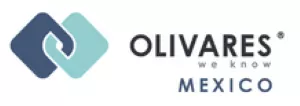Alejandro Salas of OLIVARES questions whether requiring the submission of original objects for comparison is hindering the proper enforcement of trademark rights and represents an 'improper interpretation' of the criminal statute
The counterfeiting of trademarks for the purpose of commercial speculation stands as one of the most lucrative illegal activities in Mexico. The practice is delineated under Article 402, Section I of the Federal Law for the Protection of Industrial Property as the utilisation of an identical mark or one so closely resembling it that it cannot be distinguished in its essential aspects from a previously registered mark or one protected by law.
This unlawful conduct, unlike other offences outlined in said law, falls outside the purview of the Mexican Institute of Industrial Property, with the responsibility for sanctioning such wrongdoing resting upon the Attorney General's Office, given its classification as a special offence.
For the proper compilation of the investigation dossier, the federal public prosecutor must consider three inherent elements of the offence:
- Commercial speculation;
- Absence of authorisation from the holder or licensee; and
- False representation of a product or service.
The final paragraph of the law facilitates the validation of the offence by stipulating that mere use of the mark in an identical or indistinguishable manner to how the mark is represented in the trademark registration, or the respective declaration of notoriety or fame, suffices.
The public prosecutor coordinates the investigation with the police and experts. Criminal regulations allow for expert assessments when specialised knowledge is required, thus requiring experts to hold a degree in the field they participate in or possess relevant expertise in their respective domains.
Presently, for the substantiation of the offence of trademark counterfeiting, the involvement of intellectual property experts is indispensable, as it is within their expertise to ascertain the inauthenticity of the objects submitted for examination. However, in practice, at the request of the intellectual property expert, the public prosecutor often requests the presentation of an original object for comparison, notwithstanding the lack of legal basis for such a request.
This practice may result in investigations being concluded without the initiation of criminal proceedings due to an alleged lack of evidence, despite the unauthorised use of the trademark and an absence of authorisation already constituting essential elements of the offence.
In this regard, in the author's opinion, there exists an improper interpretation of the criminal statute, as one essential element – namely, the absence of authorisation – is satisfied through the filing of the corresponding complaint by the affected rights holder or their representatives, while commercial speculation falls under the purview of the public prosecutor.
However, counterfeiting, as the third essential element of the unlawful conduct, falls under the responsibility of the intellectual property expert, who, through their intervention, must determine the existence or absence of the use of a trademark on the examined object.
Therefore, not only does the requirement to exhibit an original object for comparison lack legal foundation and should not be demanded, but it is also unnecessary and serves as an impediment to the proper enforcement of trademark rights through criminal proceedings.
Originally Published by Managing IP
The content of this article is intended to provide a general guide to the subject matter. Specialist advice should be sought about your specific circumstances.

